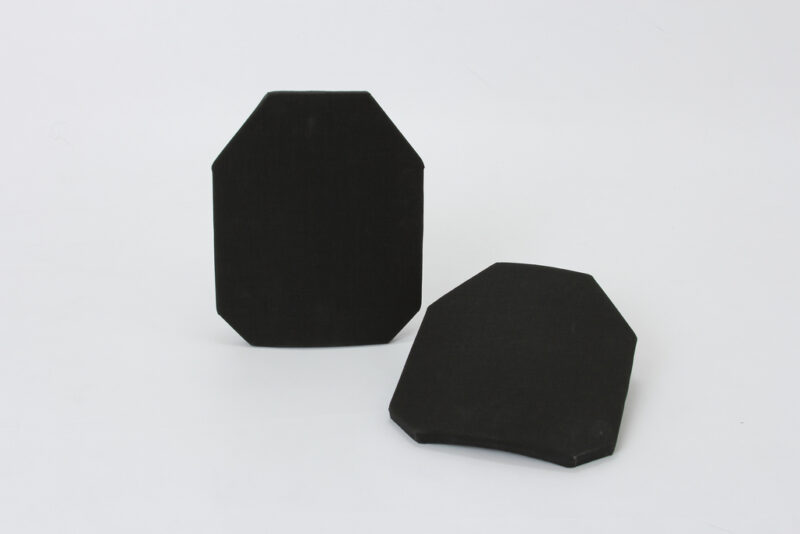Ballistic Shields: How They Stop Bullets and Other Projectiles
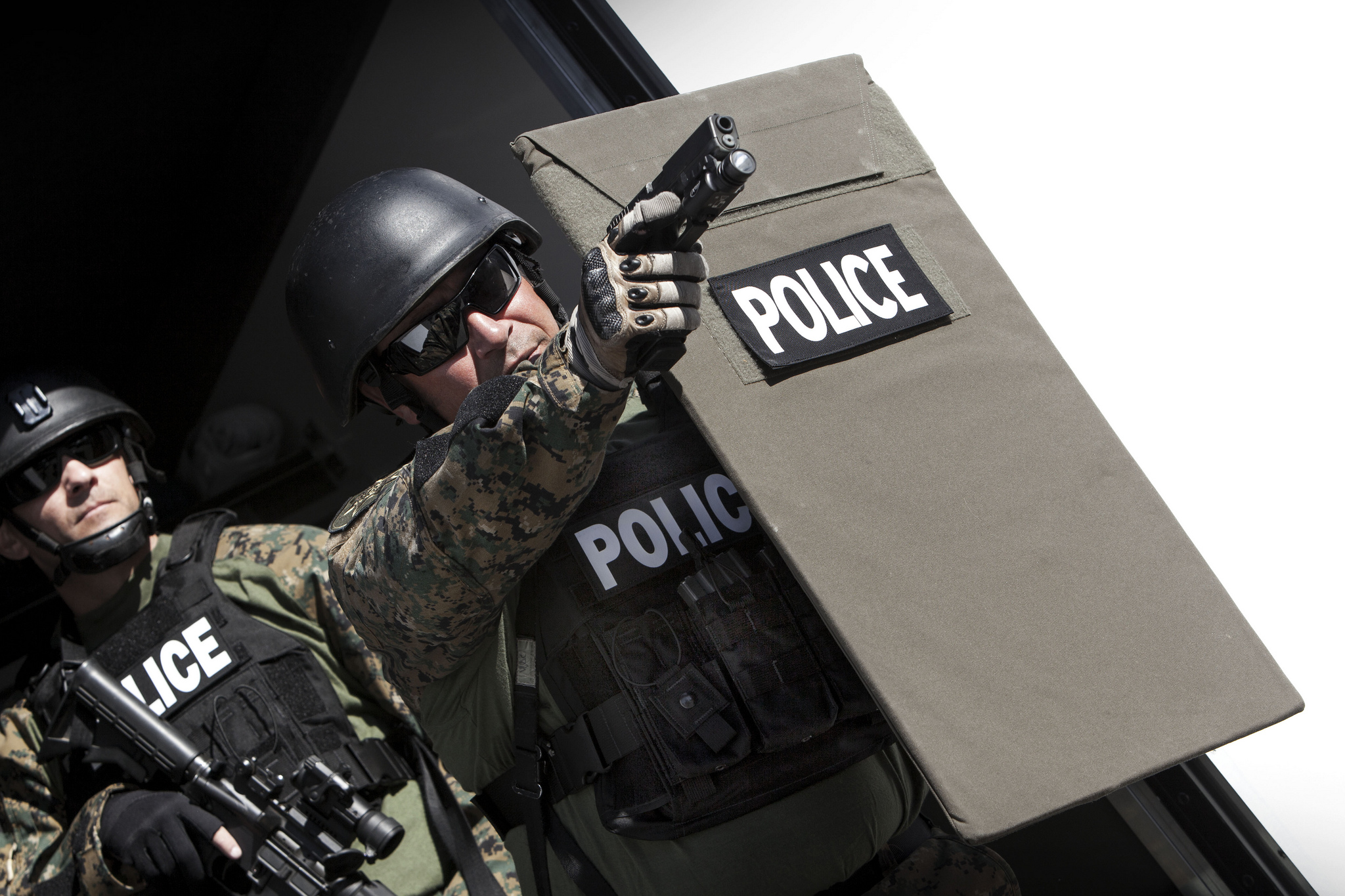
In the world of tactical response and law enforcement, protection is everything. Ballistic shields have become one of the most effective tools to help officers and military personnel stay safe in dangerous situations. Whether confronting an active shooter, breaching a hostile structure, or navigating a tense standoff, these shields offer mobile, personal protection against firearms and other threats.
But what exactly makes a ballistic shield capable of stopping a speeding bullet? And what goes into the design that turns these slabs of armor into life-saving equipment? In this guide, we’ll explore how ballistic shields work, what they’re made of, and how they’re used in real-life operations.
What Are Ballistic Shields?
Ballistic shields are portable barriers that absorb or deflect projectiles like bullets, shrapnel, and blunt-force threats. Unlike body armor, which is worn, ballistic shields are carried or wheeled, offering protection to the entire front of the body, or even multiple individuals behind it.
They’re commonly used in tactical police units, military teams, private security, and specialized rescue or breaching operations. The goal is simple: give personnel a fighting chance to advance toward a threat or extract people from danger while reducing the risk of injury or death.
How Ballistic Shields Stop Bullets
To stop a bullet, a shield must manage the massive amount of kinetic energy a projectile carries when it hits its surface. When a bullet impacts a ballistic shield, two key things happen.
- First, the shield attempts to absorb the bullet’s energy. The materials in the shield deform, stretch, or compress to spread the energy out, reducing the chance of penetration.
- Second, in many cases, the bullet itself breaks apart or flattens on impact, which helps further neutralize the danger.
The balance of disruption and absorption is a function of the shield’s material and construction, which brings us to the second most important factor: what ballistic shields are constructed of.
Materials Used in Ballistic Shields
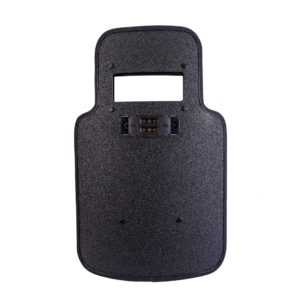
Ballistic shields employ materials that are highly resistant to damage by impact or weight. Kevlar, a man-made fiber most commonly associated with its use in bulletproof jackets, is widely used. It provides good protection against blunt trauma and is reasonably light.
Another common material is Ultra-High-Molecular-Weight Polyethylene (UHMWPE). This high-tech plastic is applied in layers to catch bullets and decelerate them. It’s especially prized for its lightweight, water, and UV damage resistance.
Ceramic plates or hardened steel are usually incorporated into the design for increased threat levels, particularly those targeting rifle fire. Ceramics are brittle but highly effective at dissipating incoming rounds, whereas steel can offer real protection at the expense of added weight.
Ballistic Shield Protection Levels
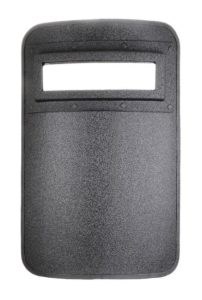
Ballistic shields are rated by NIJ (National Institute of Justice) standards, which measure their effectiveness at stopping various types of ammunition.
NIJ Protection Levels:
Level IIIA: Deflects most handgun rounds, including.44 Magnum and 9mm.
Level III: Deflects rifle rounds like 7.62mm FMJ.
Level IV: Provides maximum protection and can deflect armor-piercing rounds.30-06 AP.
Most law enforcement units use Level IIIA shields for general-purpose tactical operations, whereas military or special operations might need Level III or IV protection.
Design and Functionality Of Ballistic Shield
Current ballistic shields are no longer rudimentary slabs of armor. Many have added features to make them more user-friendly and efficient in combat.
A few have built-in viewports made from ballistic glass so the user may observe while still protected. Some have integrated illumination systems for improved vision in reduced-light situations. Handles and straps are contoured to help limit fatigue, particularly in shields for extended wear.
Larger, bulkier shields can be wheeled or mounted on rolling platforms. These are sometimes employed in perimeter defense or moving up to barricaded suspects with maximum cover.
Some shields also have weapon ports, where officers can shoot through tiny openings while remaining undercover. These nuances become a matter of life and death during high-pressure operations.
When Are Ballistic Shields Used?
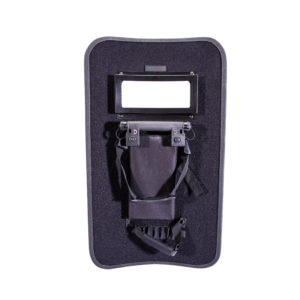
Ballistic shields are used in different situations. In hostage rescue missions, they provide essential cover while approaching small or unknown areas. Active shooter scenarios enable law enforcement to approach the danger while remaining covered. In riots, shields offer protection not only from bullets but also from thrown items and bludgeoning attacks.
They are also valuable in high-risk warrant service, where armed suspects are likely to be encountered. In such cases, a ballistic shield gives officers the confidence and tactical edge they require to perform their tasks safely.
Strengths and Weaknesses of Ballistic Shields
Ballistic shields are potent devices in high-risk situations, providing life-saving protection and tactical mobility. However, as with any tool, they also have strengths and weaknesses.
Advantages of Ballistic Shields
On-the-move protection: Shields offer immediate, transportable cover from guns and projectiles, enabling users to move forward securely in open or enemy terrain.
Team protection: A single shield can safeguard several team members during entry or when moving toward a threat, enhancing mission security overall.
Psychological deterrence: A ballistic shield can diffuse critical situations by illustrating force capability and lowering the antagonist’s will to fight.
Mission flexibility: Contemporary shields commonly have ports, lighting, and mounts, rendering them flexible and adaptable to various tactical equipment and attachments.
Enhanced survivability: Shields enhance survival probability and wounding prevention for risky operations, particularly when faced with active danger.
Ballistic Shield Limitations
Protection: Shields can only cover what they physically encase. Arms, legs, and other limbs might still be at risk.
Weight and fatigue: Lightweight models are still fatiguing to use over long periods, compromising maneuverability.
Multiple hits: Multiple impacts will reduce shield integrity or enhance the danger of spalling (bullet or shield surface fragmentation).
Cost: High-quality ballistic shields are costly and require special training to be used effectively.
Limited visibility: Although some shields include viewports, general situational awareness may be compromised compared to unshielded ones.
Training and Tactical Use of Ballistic Shield
Using a ballistic shield effectively requires more than simply taking it into the field. Units need to train extensively in positioning, communication, and tactics. This involves training on how to move with the shield in confined areas, cover teammates, and shoot from behind the shield without risking safety.
Shield operators often act as point personnel in tactical stacks. Their movement, timing, and awareness can shape an operation’s success or failure. That’s why real-world scenario training is critical to shield deployment.
Evolving Technology of Ballistic Shield
As materials science and tactical technology advance, ballistic shields become more effective, lightweight, and versatile. Future developments may include smart shields with embedded sensors, real-time communication features, or heads-up displays.
We can also observe greater modularity—systems in which shields can be modified for varying threat levels or numbers of players with attachable elements.
Conclusion
Ballistic shields are an essential part of contemporary defense mechanisms. They integrate engineering, materials science, and tactical design to save lives. They may be employed by police, the military, or private security companies, but whatever the application, these shields are not merely for protection; they enable responders to move into harm’s way with confidence and safety.
Knowing how they function, what they’re constructed of, and how they’re deployed on the battlefield provides an appreciation for the engineering that goes into these life-saving tools—and the men who wield them.
Frequently Asked Questions
Can a ballistic shield neutralize a sniper rifle bullet?
Only NIJ Level IV-rated shields can neutralize armor-piercing bullets from sniper rifles. These are larger and heavier shields for high-risk operations.
Are ballistic shields bulletproof?
No. They are rated bullet-resistant. Although they may stop particular rounds of ammunition, no shield can withstand everything.
How much do ballistic shields weigh?
A shield weighs, depending on the size and degree of protection. Lighter ones might weigh 10–15 lbs, while heavy-duty Level IVs can exceed 40 kg.

